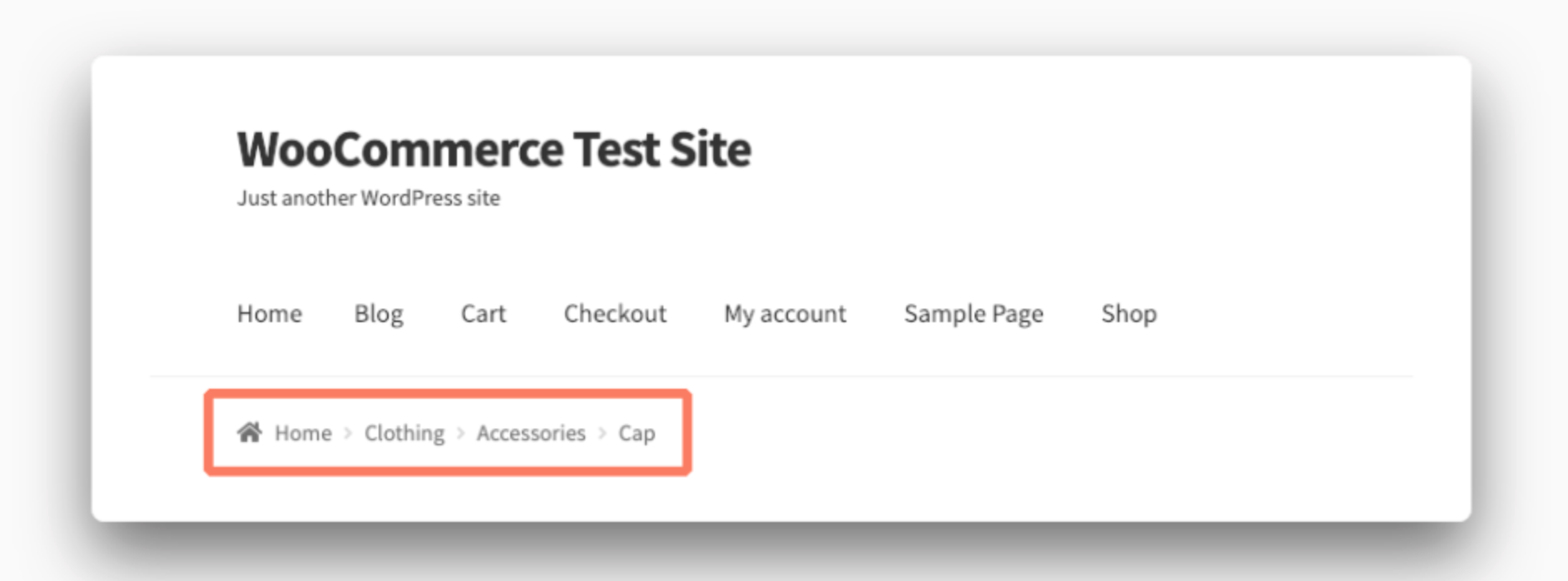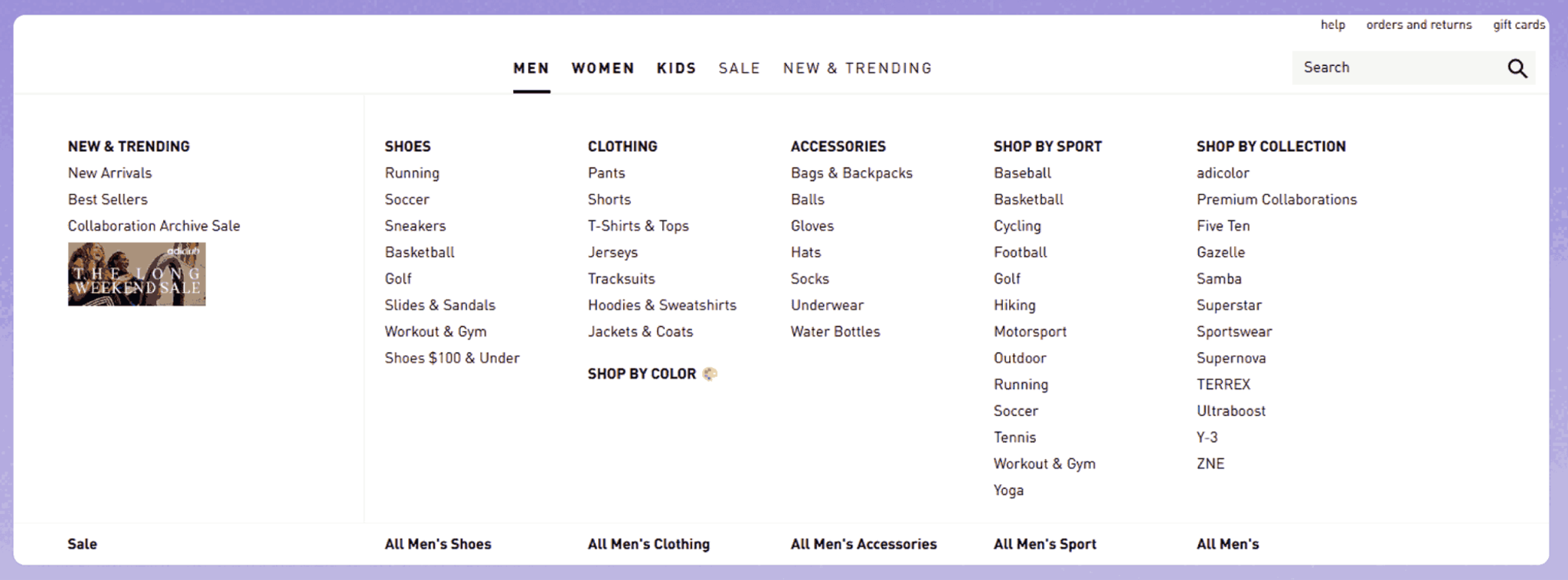
Creating a seamless user experience (UX) is one of the biggest challenges for any online store. Shoppers should be able to find what they want quickly, without getting lost or overwhelmed. Two of the most effective navigation tools that help achieve this are breadcrumbs and mega menus.
While both enhance navigation, they do so in different ways. Understanding their strengths, and knowing when to use each, can make a major difference in how users interact with your store. Let’s explore how breadcrumbs and mega menus compare, and which one might improve UX more for your specific site.

Breadcrumbs are small navigational aids that show users where they are within a website’s hierarchy. Typically displayed near the top of a page, a breadcrumb trail might look like this:
Home > Women’s Clothing > Dresses > Maxi Dresses
Each segment is clickable, allowing users to move backward easily without starting over.
Key Benefits:
Breadcrumbs are simple yet powerful. They quietly enhance orientation and usability without taking up much space.

A mega menu is a large, expandable dropdown menu that displays multiple options at once. Instead of showing a single column of links, it opens into a panel that organizes links into categories and subcategories.
You’ve probably seen mega menus on major eCommerce sites like Amazon or Zara. They help users browse large inventories efficiently without clicking through several layers.
Key Benefits:
Mega menus are ideal for stores with broad product ranges, providing a structured yet immersive browsing experience.
While both breadcrumbs and mega menus improve navigation, they serve different purposes within the user journey. Breadcrumbs guide users through the path they’ve taken, while mega menus help them choose where to go next. Understanding how each affects user experience requires looking at several key UX dimensions, from navigation flow and cognitive load to mobile usability and SEO value.
Navigation is at the heart of user experience. Users expect to reach what they’re looking for in as few clicks as possible.
In essence, breadcrumbs help users navigate backward and stay grounded, while mega menus help them move forward efficiently. Both improve navigation, but in opposite directions.
Cognitive load refers to how much mental effort users must expend to make decisions while browsing. A good UX design minimizes this effort so users can focus on shopping or reading instead of thinking about “where to go next.”
The takeaway: breadcrumbs clarify the “where am I?” question, while mega menus clarify the “where can I go?” question. Both are valuable, as long as they’re designed with simplicity and hierarchy in mind.
Mobile UX is critical today, as most users browse and shop from their phones. However, both navigation types behave differently on small screens.
For mobile-first stores, a hybrid approach works best, keep breadcrumbs visible for context and simplify the mega menu for fingertip-friendly navigation.
Good UX isn’t just about function; it’s also about form. Navigation elements contribute heavily to a site’s overall design aesthetics and perceived professionalism.
From a visual standpoint, breadcrumbs complement the design, while mega menus define it. Each plays a different but equally important role in creating an appealing interface.
Understanding how users behave helps decide which element drives better engagement.
Together, they support both depth (via breadcrumbs) and breadth (via mega menus) of exploration, creating a balanced browsing journey.
From an SEO and accessibility standpoint, both breadcrumbs and mega menus offer technical and usability benefits when implemented correctly.
In accessibility terms, mega menus must be coded carefully to support keyboard navigation and screen reader compatibility. Breadcrumbs, being simpler, are naturally more accessible and easier to maintain.

An often-overlooked factor is how each element affects site performance.
Faster navigation improves both UX and SEO, so balancing visual richness with technical performance is key.

In short, breadcrumbs and mega menus complement each other rather than compete. Breadcrumbs make users feel anchored and confident, while mega menus empower them to explore freely. A well-balanced combination can significantly enhance overall UX, guiding users both across and within your site, smoothly and intuitively.
Breadcrumbs are best suited for websites with deep category hierarchies, such as:
They work particularly well when users enter your site through search engines and need to backtrack to higher-level categories without frustration.
Mega menus shine on websites with broad and diverse content, including:
They help users explore everything your site offers at a glance, boosting product discovery and engagement.
Yes. Many successful websites use both breadcrumbs and a mega menu together.
A mega menu can help users enter the right section, while breadcrumbs guide them once they’re inside. This combination supports both exploration and orientation, creating a smoother browsing flow overall.
For example, a fashion store might use a mega menu to display all product categories and breadcrumbs to show the user’s path once they’ve navigated to a specific dress or accessory.
So, which improves UX more: breadcrumbs or mega menus?
The answer depends on your website’s structure and user behavior.
In many cases, the most effective approach is combining both. The mega menu helps users explore your store, while breadcrumbs ensure they never lose their way. Together, they create a frictionless experience that keeps visitors browsing longer and buying more.


In eCommerce and SaaS, where customers often hesitate due to too many similar options, decoy pricing helps simplify decisions. It reduces uncertainty, increases confidence, and encourages users to choose what feels like the “smart” option. This article will walk you through everything you need to know about decoy pricing, from its psychological foundation to real-world applications and best practices.
When written well, helper text acts like a silent assistant that anticipates questions before users ask them. It reassures users, reduces mistakes, and makes forms feel easier and faster to complete. To achieve this impact, helper text must be intentional, user-focused, and strategically designed.
Reducing cognitive load helps customers focus on buying rather than thinking, leading to better user experience and higher conversion rates. Below are in-depth strategies to reduce cognitive load in online shopping, with clear explanations and practical actions.